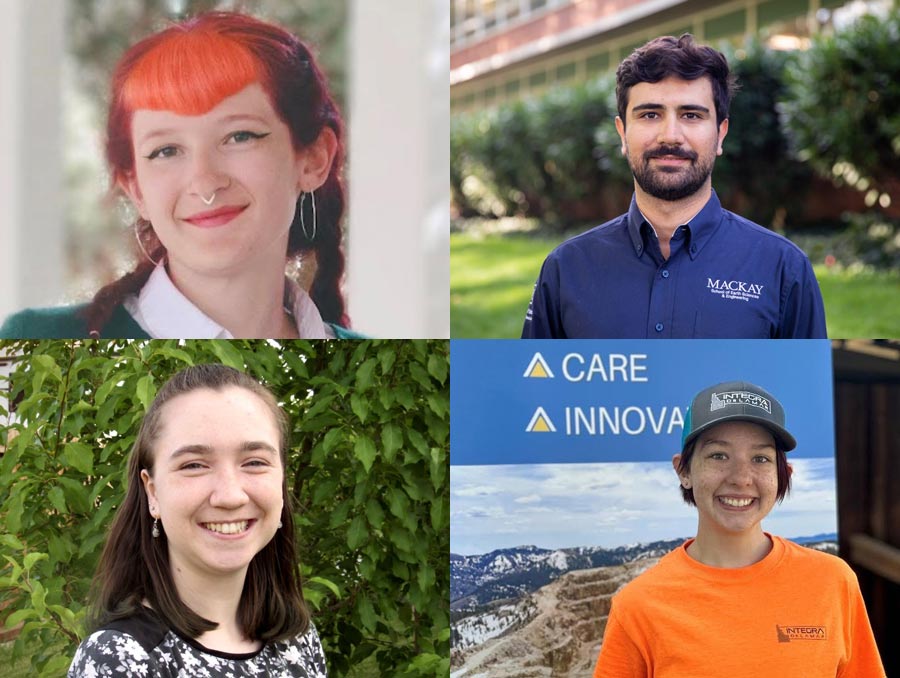A team of students from the Mackay School received news last month that they placed second in the first annual American-Made Carbon Management Collegiate Competition.
The team, who named themselves “Biggest Little Lithium” in a play on Reno’s slogan, is comprised of three undergraduate students, Alexia Carver, Trista McLaughlin and Ash Thompson, and one graduate student, Kamal Mousavi. The team was mentored by Department of Mining and Metallurgical Engineering Professor Ehsan Vahidi.
“I want to express my immense pride in our team's achievements and their dedication to making a positive impact on carbon management practices,” Vahidi said. Vahidi also serves as an associate editor of the open-access journal, Frontiers in Sustainable Resource Management. Vahidi's research centers on reducing the carbon costs of development.
The competition, hosted by the Department of Energy’s (DOE) Office of Fossil Energy and Carbon Management, challenged students to propose regional carbon networks that would annually transport at least one million metric tons of carbon dioxide from industrial sources to locations that can use or permanently sequester CO2.
The top three teams, including the first-place team from the University of Michigan and the third-place team from the University of Houston will present their winning proposals at the DOE’s annual Carbon Management Research Project Review Meeting in August 2023. The meeting is being held in Pittsburgh, Pennsylvania.
“[The meeting] provides an excellent opportunity for the team to present their winning proposal and to network with carbon management professionals,” Vahidi said.
The second-place prize earned the team $8,000, which will be split evenly among the students.
Carver, the team captain, plans to use the prize money to pay for travel to the conference in August and to finance her proposed research on bio-mining in the fall semester.
“Our team is the next generation of metallurgists, geologists, and environmentalists, so the strategies in this project will be vital for creating more sustainable mining technology as we enter the workforce—especially in the lithium sector,” Carver said.
Biggest Little Lithium’s submission turned CO2 into magnesium carbonate through modern chemical engineering. Carbon capture will reduce the environmental footprint of the Thacker Pass lithium mine in Nevada.
“By addressing the carbon emissions associated with the mining process, our team aimed to contribute to sustainable practices in the industry,” Vahidi said.
Carver said the most challenging part was getting a good understanding of the problem of carbon storage.
"Wading through the vast volume of research on carbon capture and storage took our team several months, and because myself and two other researchers on our team are undergraduates, we really challenged ourselves to learn and evolve the project as we gained more expertise," Carver said.
Throughout the competition, the teams were able to access industry experts at Lithium Americas for guidance. The DOE also provided guidance midway through the competition. The students gained skills and hands-on experience that can be applied in industry.














